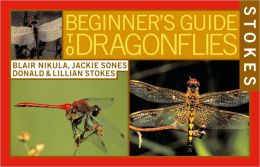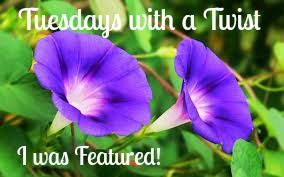I went out last night to close the door to the hen house, and on the small layer of fresh snow, I found a little bit of a calling card:
I went inside to gather those children who were home, and they gathered a flashlight and a tracking field guide. The Possums are back. Or more likely, they never left.
If you know our history with possums, some is less cute than others. Luckily our chicken coop and run has never been breached because one thing is for sure: It's one wild life around here.
“Tell me, what is it you plan to do with your one wild and precious life?” ― Mary Oliver
Showing posts with label wildlife. Show all posts
Showing posts with label wildlife. Show all posts
Saturday, January 10, 2015
Wednesday, March 12, 2014
Guess who's back?
Chickens on High Alert.
Suspicious foot prints
Yup. It's a possum. The babee was the first to spot it, the 5yo identified it.
I always feel rather happy to see wildlife, even if it's the chicken-attacking kind. But in this case, I am not particularly excited about the fact that this possum is running around in plain daylight, was thoroughly underwhelmed by my approaching him (or her, heaven forbid. No more baby possums here, please!), and was only doing the minimum running away after I hollered and banged a few logs.
Bye. Have a nice, happy life. Somewhere else, please!
Friday, January 31, 2014
{this moment}
. . . . . . . . .
{this moment}
A Friday SouleMama
ritual. A single photo - no words - capturing a moment from the week. A
simple, special, extraordinary moment. A moment I want to pause, savor
and remember. If you're inspired to do the same, leave a link to your
'moment' in the comments for all to find and see.
Saturday, September 21, 2013
Nature's bubble wrap
Who doesn't love popping bubble wrap? Today I learned something equally addictive from my middle daughter: Popping jewelweed seeds. The whackiest sensation! The seed pods get so full and spring loaded when they're ripe that you have to barely touch them to make them explode, curl up and stick their tongue out.
Jewelweed (aka impatiens capensis or, aptly, 'touch-me-not') is a medicinal herb that grows abundantly around here, with deep yellow/orange flowers. Its crushed leaves are a remedy for stinging nettle, insect bites and even poison ivy rash, and the seed pod is truly a showcase for the ingenuity of Mother Nature's mechanical engineering. We found plenty of jewelweed during today's family nature walk in our 'hood:
'Tis the season, or almost. Foliage, Indian Summer, Leaf Peeping. It's good to be in New England in Fall! The kids took soil samples, found the prettiest mossy rocks, and had a generally jolly time. So jolly that I was able to sneak in a nap at the top of the hill ... once they learn how to be entertained by nature, there is no more boredom for the kids.
We walked by a tree felled by hurricane Sandy, and repeatedly heard a rather intense buzzing noise: Could that have been a cicada? When I looked up more about cicadas, I came across this cool quote from the National Geographic:
"Researchers have hypothesized that periodical cicadas evolved prime-numbered life cycles to avoid certain parasites, and that they stay underground for so long to avoid larger predators like birds and squirrels".
What an amazing practical use for prime numbers! If I ever have to explain prime numbers to anyone again, I'll be sure to remember that.
Later, the husband observed a spectacular case of a very long, thin earth wasp (an Ammophila?) dragging a caterpillar into its earth hole, coming back out after some time, and then spending quite a bit of time closing up the entrance to make it invisible. I looked up more detail here, a very nice site for bug lovers.
And now I have to run because the kids just captured a small salamander to be studied*!
*and released asap, in the exact spot where it was found, of course.

Wednesday, July 10, 2013
Here Be Dragon(flie)s
We've got a project going on around here. My oldest daughter is fascinated with dragonflies right now, and I found her this wonderful book

which she's read a number of times now. Her process is as follows. You start with a hunt and capture
and then temporarily restrain the dragonfly under study.
We photograph the dragonfly as best as this mama can, and she gets to work with the book, determining the particular specimen, and draws it.
And in the end, you can catalog your findings for the summer.
In theory anyway.
 In reality, there are a few stumbling blocks. One, there are a large number of practically indistinguishable sub-species. There are black, white-faced, cherry-faced, saffron-winged, ruby, autumn, band-winged and probably many more meadowhawks. And we're two Type A go-getters who don't love to give up... Then there's the chance of little sisters freeing the subjects before their study is complete. Or the time when she manages to catch a huge darner, but neither the net, nor the camera or the book are available!
In reality, there are a few stumbling blocks. One, there are a large number of practically indistinguishable sub-species. There are black, white-faced, cherry-faced, saffron-winged, ruby, autumn, band-winged and probably many more meadowhawks. And we're two Type A go-getters who don't love to give up... Then there's the chance of little sisters freeing the subjects before their study is complete. Or the time when she manages to catch a huge darner, but neither the net, nor the camera or the book are available!
The joy is in the journey, though, and she's not losing her enthusiasm that easily.
We think this one is a cherry-faced meadowhawk, but how sure can you be?
That one was not in our book. But she loved the shadow and decided to trace it.
She devised a way to preserve a wing she found, using cling wrap and massive amounts of scotch tape.
Another meadowhawk, I think.
So much time with my soon-to-be-second-grader, and learning together all the time. Glorious summertime!


Thursday, July 4, 2013
Summer!
It's hotter than Hades, and the kids are bothering cranky old me in my un-airconditioned house. I sent them outside with popsicles so I could have some peace and quiet and write to you about what an awesome mom I am. Seems totally reasonable, right? The woodworker has declared it a good day for basement projects and he's right. He went to hide work there and finished the cork boards I had ordered a while back. Then, I decided to honor the day by switching our season science table officially to Summer. You can see the cork boards in the corner above the table, freshly installed.
This summer, you'll find this horse shoe crab molt we found at the beach last year, an abandoned wasp nest we cut out of a bush, shells upon shells, some butterfly wings and chrysalises. Rocks, fancy and not so fancy. Feathers. And lots and lots of field guides of all sorts. Can never have enough field guides!
My younger two kids have been asking and asking when exactly summer would be here, and how we would know? How many days are left until the longest day of the year?
We keep track of these things using this amazing calendar by Chris Hardman:
Looks like this on the wall, above the map. Each season has a three-panel fold out that is beautifully decorated with interesting natural motifs, and then there is the back of another three-panel fold out explaining phenomena in nature and astronomy one might observe at any given time. Since the woodworking husband has become an astronomer husband as of late, this is a great resource for everyone in the family.
There is also a simpler chart noting the day's date and weather, which works better for the younger two children. And then, there is more literature and a simple microscope set that they managed to win at a Christmas raffle one year.
I think I'm going to take the 'Woods, Ponds & Fields' book and find a body of water tocool down in study now. Did I mention it's a scorcher here today? Happy Air Candy Night to you!
And here is the table! I borrowed the concept of a season table from the Waldorf world, but ours has a definite science slant to it. The table itself was a freecycle find with solid mahogany legs, except the table top was totally rotten. We replaced it with a tray top, with a 2-inch tall frame around the top, to hold in all those items we wanted to study and decorate with. And now when the kids ask if they may bring an inanimate object inside, I have an answer: It can go onto the season science table! (But nowhere else. Even I have a breaking point for messes in the house).
This summer, you'll find this horse shoe crab molt we found at the beach last year, an abandoned wasp nest we cut out of a bush, shells upon shells, some butterfly wings and chrysalises. Rocks, fancy and not so fancy. Feathers. And lots and lots of field guides of all sorts. Can never have enough field guides!
My younger two kids have been asking and asking when exactly summer would be here, and how we would know? How many days are left until the longest day of the year?
We keep track of these things using this amazing calendar by Chris Hardman:
Looks like this on the wall, above the map. Each season has a three-panel fold out that is beautifully decorated with interesting natural motifs, and then there is the back of another three-panel fold out explaining phenomena in nature and astronomy one might observe at any given time. Since the woodworking husband has become an astronomer husband as of late, this is a great resource for everyone in the family.
There is also a simpler chart noting the day's date and weather, which works better for the younger two children. And then, there is more literature and a simple microscope set that they managed to win at a Christmas raffle one year.
I think I'm going to take the 'Woods, Ponds & Fields' book and find a body of water to
 |
| Photo credit to the artsy husband! |
Friday, June 21, 2013
{this moment}
{this moment} - A Friday ritual. A single photo - no words -
capturing a moment from the week. A simple, special, extraordinary
moment. A moment I want to pause, savor and remember.
If you're inspired to do the same, leave a link to your 'moment' in the comments for all to find and see.
Thursday, June 20, 2013
Three Native Shrubs with Edible Berries
After our trip to the Garden in the Woods, and speaking to a friend about our quest for native, edible plants and shrubs (isn't it sometimes funny that when you're ready for a particular idea, you come across it via several avenues?) I was inspired to purchase three shrubs that each produce edible berries and are suitable for a part-shade location like ours. I'm writing this post in part to keep the information together for myself, but I think it might be of interest to other in the Northeast! So here we go, my new friends in the far back of the yard (from left to right):
One serviceberry:


One black chokeberry:


And one spikenard:
For now I'm hoping that none of them are deer food, but next year, I hope to see some flowers and berries (though likely it'll take another 2 growing seasons).
Subscribe to:
Posts (Atom)










.JPG)
.JPG)
.JPG)
.JPG)
.JPG)





















